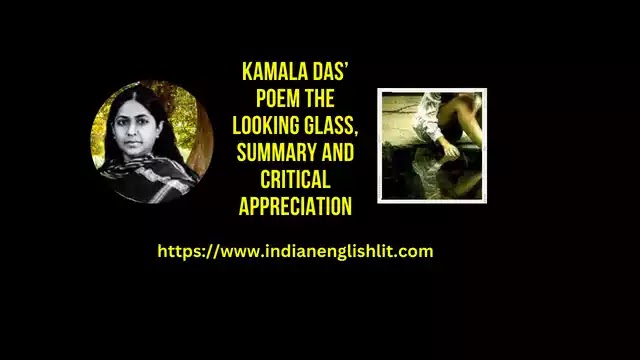The term picaresque originally comes from the Spanish word Picaro which means a rogue. It is a novel which contains the adventures of a rogue during his journey to various places. But in general it is now treated as the description of the adventures of a person who sets out on a long journey and therefore not necessarily a rogue. There are commonly two essential qualities of a picaresque novel. First that the hero undertakes a journey and secondly that during this journey he meets with a large number of varied experiences.
 |
| Mulk Raj Anand’s Novel Coolie—A Picaresque Novel |
If we analyse Coolie from this point of view, it is certainly a picaresque novel. In showing Munoo going from his village to Sham Nagar, from Sham Nagar Daulatpur, from Daulatpur to Bombay and then to Simla, Anand is not interested in showing any moral spiritual or psychological development in his character. The whole period in this journey is only two years and in this short period, the circumstances throw him from place to place. Munoo's movement sharpens his zest for life which is tragically denied to him in his tragic end. The picaresque novel is the tale of a hard working travelling hero and Munoo's movement is also motivated by his search for his identity. He is certainly a dynamic character but falls an unfortunate victim of capitalism and exploitation. Moreover, in a picaresque novel the central character is accompanied by so many other characters from time to time. This also forms a particular feature of Coolie. Munoo faces various episodes, situations and characters which present him as a modern picaresque hero.
We meet Munoo when he is just a boy of fourteen years and is enjoying life in the village, though he is an orphan. Since he is taken out of the village by his uncle, he is constantly changing places which is enough to prove that this work has been certainly designed as a picaresque novel. It is true that he does not set out on this journey deliberately rather he is everywhere compelled by chance or his circumstances. Thus, the story of Munoo's life is of such a man who does not stay at one place for long. It has been pointed out in this reference that Anand has a natural disposition towards the picaresque and he has shown this in some other novels also. Coolie is also a picaresque novel in this respect. He undergoes a large number of experiences and has to face many difficulties in the period of his stay at a particular place but all these experiences are the adventures quite like that of a picaresque hero.
Munoo's first adventure as the hero of the picaresque novel is his fight with the two servants Varma and Lehnu. At the same time his journey from the village to Sham Nagar is also no less than an adventure. He walks on foot, his feet are blistered, in spite of his keen desire, he is not allowed to enjoy the cart travel and he drags himself behind his uncle with great difficulty. His wearisome domestic work in the home of Nathoo Ram, his undergoing the humiliation and tolerating abuses all the time, his being beaten from time to time are all his adventurous experiences of a hero of the picaresque novel. He is beaten by the two boy servants, wounded and later dressed by Prem Chand is the episode as is usually introduced in the plots of the picaresque novels. His relieving at the kitchen door is the humour, his biting on the check of Sheila draws our sympathy for this innocent boy and finally unable to tolerate these tortures any more, he slips out of home one evening and hides himself under the berth in a railway compartment, all these are the essential features of the behaviour of a picaresque hero. Similarly, in Daulatpur he steals unripe mangoes and cats them in so large quantity that he has sore eyes which is an innocent mischief. He is beaten by Ganpat and he silently but painfully tolerates his abusing which is in itself an adventure. The greatest adventure on the lives of a picaresque hero is in the grain market and vegetable market. He finds widespread starvation and unemployment. In Bombay, his experiences in the cotton mill are quite adventurous. Even the element of sex has been introduced when one night Lakshmi inspires him for this act. The management of the mill creates communal riots and Munoo is again compelled to seek shelter somewhere else. He has some new experiences of the political leaders like Lalla Omkar Nath and Sauda who use the workers in their own way. Munoo then suddenly comes into contact with Mrs. Mainwaring who is lusty and corrupt, exploits him sexually and finally he dies. All these are epical and picaresque hero like adventures which the poor boy fails to tolerate in the long run.
All these various experiences at various places are a proof that Munoo has the qualities of a picaresque hero and that this novel has been written in the picaresque tradition. But we must note that he is not the kind of the hero who generally figures in a picaresque novel because there is nothing really adventurous about Munoo's mental makeup. Munoo certainly meets adventures but he is not himself an adventurous young man. He does not seek adventure and does not put up a fight like the hero of a picaresque novel, except only once when he comes to blows with his two fellow servants in Daulatpur. He is so meek that he has no courage even to fight with his adverse circumstances in his life. Nowhere in the course of his journey or his stay at any place, does he rebel or oppose unjust social and economic systems. So, he silently falls a victim to all of them. Hence, Coolie can be called a picaresque novel only in a limited sense.
In a picaresque novel the plot is often loose and incoherent. It seems as if a series of various incidents have been loosely pinned together and there is no logical relation between them, except the presence of the same hero throughout. Consequently its plot is always episodic and all these stories of the various adventures can be enjoyed separately. So there is no interplay of character and circumstances. One episode does not develop organically out of the other and the previous story has nothing to do with the next. The plot of Coolie is also episodic like that of a true picaresque novel. It is nothing but the relation of a chain of various incidents taking place in the life of the hero. In one episode he comes into contact with certain characters , has various tragic experiences but as soon as he changes the place , new people come into his life and the old ones disappear forever. After Munoo leaves Daulatpur, we see neither his uncle Daya Ram nor Bibiji or Nathoo Ram. This is a very powerful element which makes Coolie a picaresque novel in the real sense. The classical unities have been nowhere preserved.
A picaresque novel is realistic, bears a certain purpose and the social picture of the contemporary conditions in their varied aspects is presented. Coolie is full of strong social criticism which is the result of the anger of the novelist against social injustice and exploitation. The depiction of society and the survey of social panorama ranging from the lower to the higher class, from poor workers to the people like Ganpat, Chimta Sahib, Sardarji and Mrs. Mainwaring has been quite epical. In revealing the torture and misery of the poor suffering class at the hands of the rich the novel emerges as a powerful social indictment of society and its forces of capitalism, industrialism and communalism. Exploitation is the chief vice of the society depicted in this novel. Munoo is exploited by all and sundry because he is poor and helpless. Anand has expressed a sordid reality that “there must only be two kinds of people in the world: the rich and the poor.” Anand chooses the picaresque form deliberately. He employs the travelling Munoo to illustrate that there is exploitation and corruption all over the Indian society. The picaresque framework helps the novelist portray the socio - economic ravages of the society. A consideration, thus, of the various features of Coolie reveals that it is a great picaresque novel. One fact remains that the framework is picaresque but the spirit has been modified. It has been considered that, “Coolie has, what the English novel has lost - the space, the immense variety of incident and character that was once in the picaresque novel.” This picaresque helps him in revealing the social picture as well as a moral inspiration to make efforts to improve it. It is a perfect example of a picaresque novel for it possesses almost all the necessary elements of this form.






